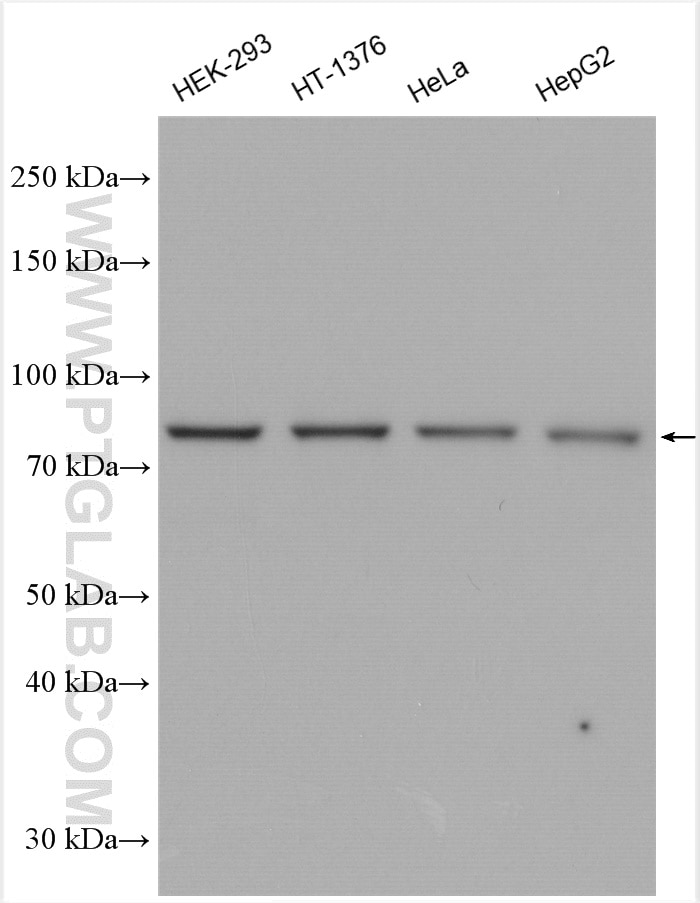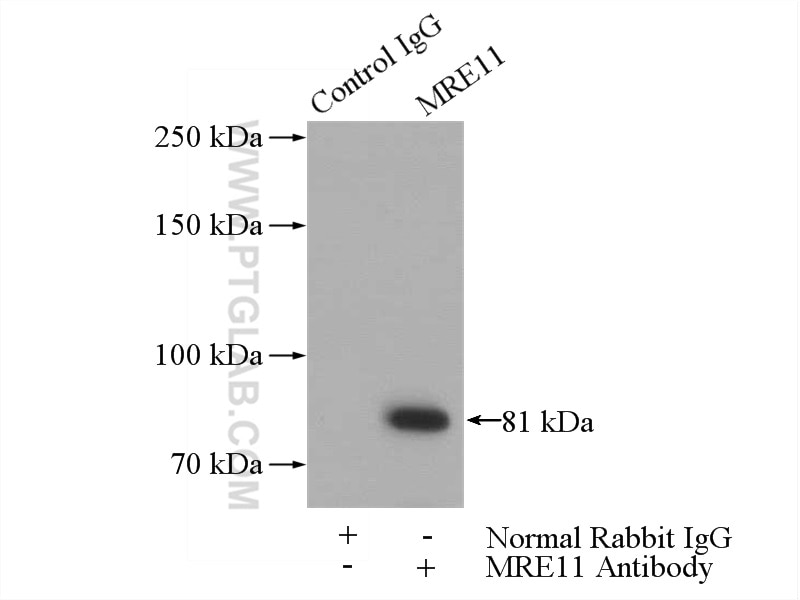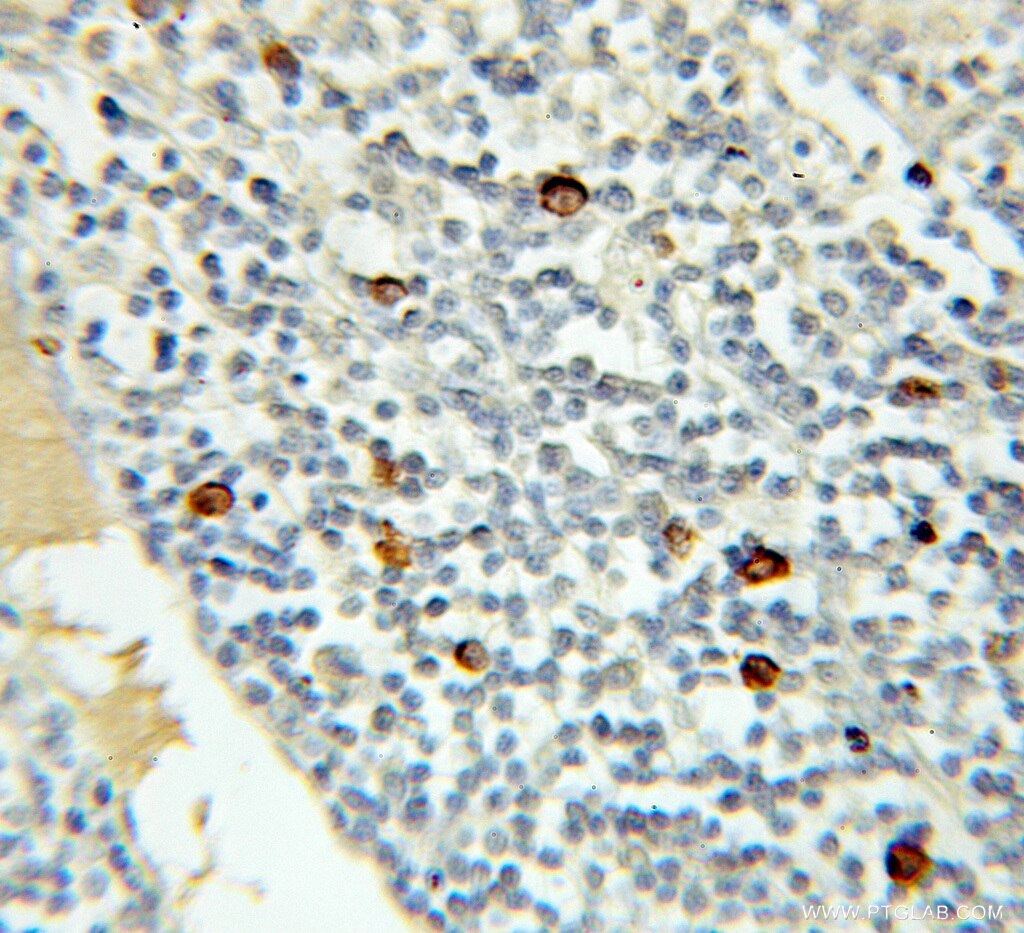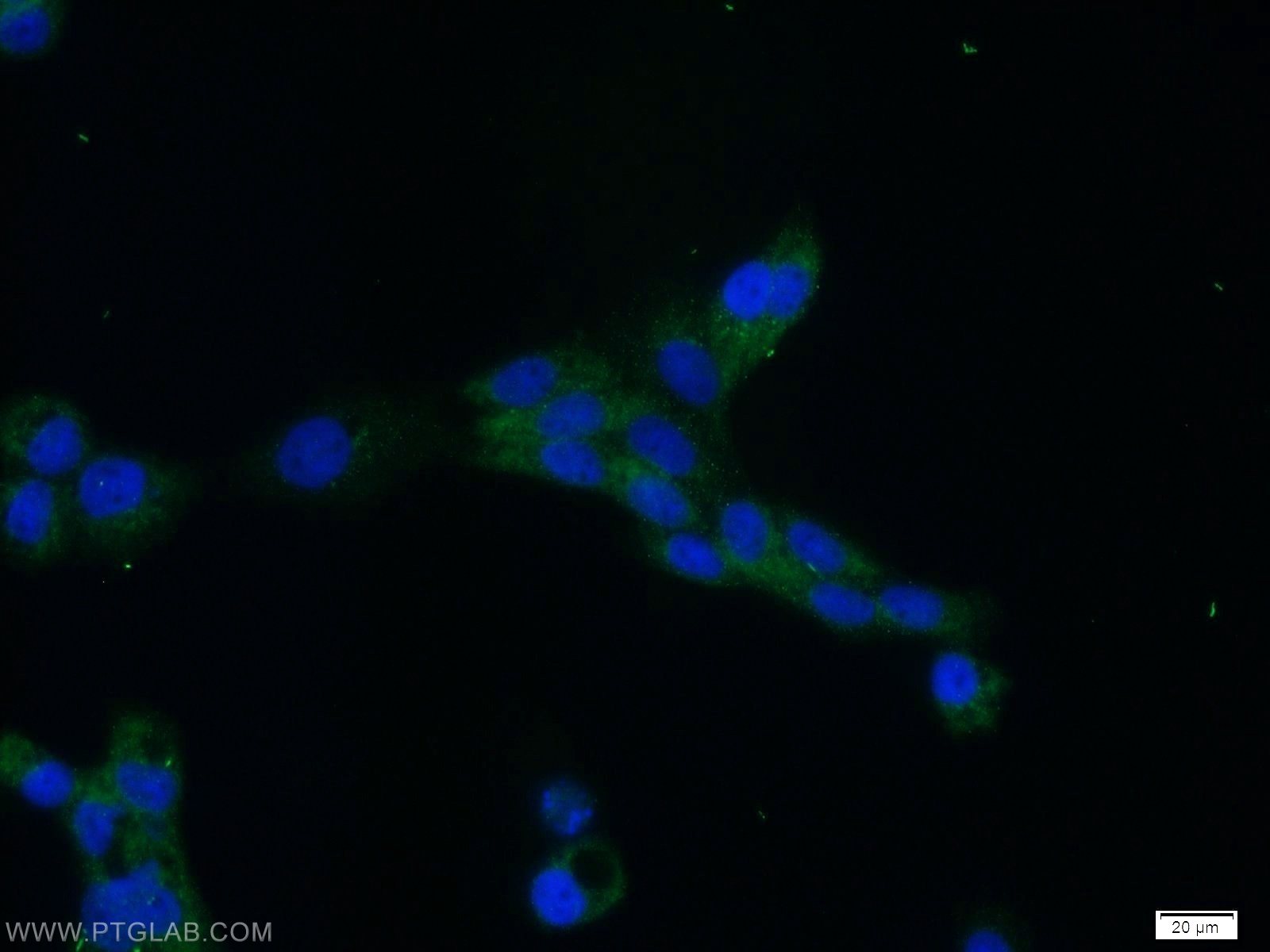MRE11 Polyklonaler Antikörper
MRE11 Polyklonal Antikörper für WB, IHC, IP, ELISA
Wirt / Isotyp
Kaninchen / IgG
Getestete Reaktivität
human, Maus, Ratte
Anwendung
WB, IHC, IF, IP, ChIP, ELISA
Konjugation
Unkonjugiert
Kat-Nr. : 10744-1-AP
Synonyme
Geprüfte Anwendungen
| Erfolgreiche Detektion in WB | HEK-293-Zellen, HeLa-Zellen, HepG2-Zellen |
| Erfolgreiche IP | HeLa-Zellen |
| Erfolgreiche Detektion in IHC | humanes Lymphomgewebe Hinweis: Antigendemaskierung mit TE-Puffer pH 9,0 empfohlen. (*) Wahlweise kann die Antigendemaskierung auch mit Citratpuffer pH 6,0 erfolgen. |
Empfohlene Verdünnung
| Anwendung | Verdünnung |
|---|---|
| Western Blot (WB) | WB : 1:500-1:2000 |
| Immunpräzipitation (IP) | IP : 0.5-4.0 ug for 1.0-3.0 mg of total protein lysate |
| Immunhistochemie (IHC) | IHC : 1:20-1:200 |
| It is recommended that this reagent should be titrated in each testing system to obtain optimal results. | |
| Sample-dependent, check data in validation data gallery | |
Veröffentlichte Anwendungen
| WB | See 12 publications below |
| IHC | See 1 publications below |
| IF | See 3 publications below |
| ChIP | See 1 publications below |
Produktinformation
10744-1-AP bindet in WB, IHC, IF, IP, ChIP, ELISA MRE11 und zeigt Reaktivität mit human, Maus, Ratten
| Getestete Reaktivität | human, Maus, Ratte |
| In Publikationen genannte Reaktivität | human, Maus, Ratte |
| Wirt / Isotyp | Kaninchen / IgG |
| Klonalität | Polyklonal |
| Typ | Antikörper |
| Immunogen | MRE11 fusion protein Ag1105 |
| Vollständiger Name | MRE11 meiotic recombination 11 homolog A (S. cerevisiae) |
| Berechnetes Molekulargewicht | 81 kDa |
| Beobachtetes Molekulargewicht | 81 kDa |
| GenBank-Zugangsnummer | BC005241 |
| Gene symbol | MRE11A |
| Gene ID (NCBI) | 4361 |
| Konjugation | Unkonjugiert |
| Form | Liquid |
| Reinigungsmethode | Antigen-Affinitätsreinigung |
| Lagerungspuffer | PBS with 0.02% sodium azide and 50% glycerol |
| Lagerungsbedingungen | Bei -20°C lagern. Nach dem Versand ein Jahr lang stabil Aliquotieren ist bei -20oC Lagerung nicht notwendig. 20ul Größen enthalten 0,1% BSA. |
Hintergrundinformationen
Mre11 (meiotic recombination 11), also named as Mre11A, is a component of the MRN( MRE11/RAD50/NBS1) complex which is a versatile complex, playing a key role in the sensing, processing, and repair of DSBs. MRE11 possesses both endonuclease and 3'-5' exonuclease activity. It contains two DNA-binding domains (DBDs), enabling it to bind both single-stranded DNA (ssDNA) and double-stranded DNA (dsDNA). After DSBs, MRE11 is loaded onto DSBs sites and cleaves DNA by cooperating with CtIP (CtBP [C terminal binding protein] interacting protein) to initiate end resection. It's reported that MRE11 is over-expressed in breast cancers. (PMID:38128537; 22914783)
Protokolle
| PRODUKTSPEZIFISCHE PROTOKOLLE | |
|---|---|
| WB protocol for MRE11 antibody 10744-1-AP | Protokoll herunterladen |
| IHC protocol for MRE11 antibody 10744-1-AP | Protokoll herunterladenl |
| IF protocol for MRE11 antibody 10744-1-AP | Protokoll herunterladen |
| IP protocol for MRE11 antibody 10744-1-AP | Protokoll herunterladen |
| STANDARD-PROTOKOLLE | |
|---|---|
| Klicken Sie hier, um unsere Standardprotokolle anzuzeigen |
Publikationen
| Species | Application | Title |
|---|---|---|
Sci Transl Med Guanosine diphosphate-mannose suppresses homologous recombination repair and potentiates antitumor immunity in triple-negative breast cancer | ||
Nat Commun Crosstalk between SUMOylation and ubiquitylation controls DNA end resection by maintaining MRE11 homeostasis on chromatin | ||
Oncogene TRIM24 is critical for the cellular response to DNA double-strand breaks through regulating the recruitment of MRN complex | ||
Cell Death Dis Acquired temozolomide resistance in MGMTlow gliomas is associated with regulation of homologous recombination repair by ROCK2. | ||
Nat Commun A multi-functional role for the MCM8/9 helicase complex in maintaining fork integrity during replication stress | ||
J Physiol Chronic fetal hypoxia disrupts the peri-conceptual environment in next-generation adult female rats. |
Rezensionen
The reviews below have been submitted by verified Proteintech customers who received an incentive for providing their feedback.
FH Arnaud (Verified Customer) (05-15-2025) | Works well
|





